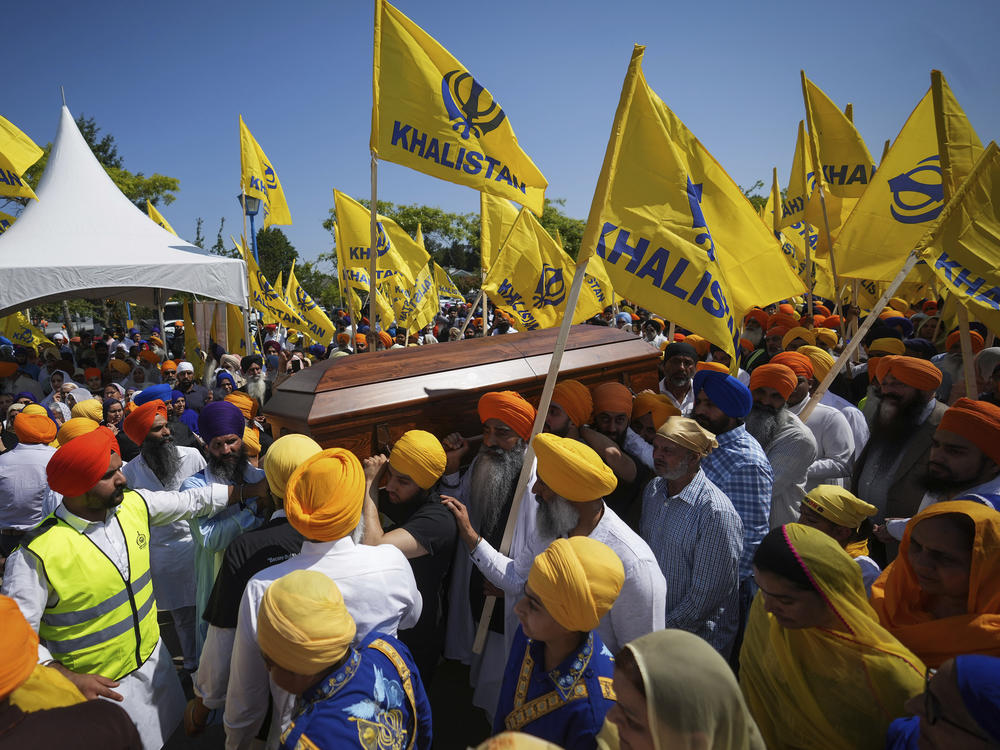The current crisis between India and Canada has brought to light a significant divergence in their perspectives on Sikh separatism. This divide was laid bare when Canadian Prime Minister Justin Trudeau suggested that India might have had a hand in the assassination of Hardeep Singh Nijjar, a Sikh separatist leader in British Columbia, back in June. New Delhi responded by emphasizing a long-standing grievance: that Canada harbors dangerous anti-India extremists whom Ottawa refuses to rein in. This is a contentious claim, and Ottawa has never officially endorsed it.
In India’s view, individuals like Nijjar epitomize these anti-India elements. Nijjar is known for his support of the Khalistan movement, which seeks to establish a separate Sikh homeland in India’s Punjab state. Indian officials accuse him of leading the Khalistan Tiger Force (KTF), a banned violent group, and formally designated him as a terrorist in 2020. Recent leaked Indian intelligence reports have alleged that Nijjar financed terrorism in India and organized arms training camps in Canada.
India’s response to this situation included issuing a new travel advisory cautioning Indians to “exercise utmost caution” in Canada and suspending visa services for Canadians. The intention behind this move is to convey that with anti-India elements allegedly operating freely in Canada, Indians are at risk. In response, Canada issued its own travel advisory advising Canadian citizens in India to “stay vigilant and exercise caution.” Additionally, Indian External Affairs Ministry spokesman Arindam Bagchi referred to Canada as a “growing reputation as a safe haven for terrorists, for extremists, and for organized crime.”
When it comes to counterterrorism, India typically aligns its positions, especially on Islamist militancy, with those of Washington and other Western capitals. However, Sikh extremism presents a different story.

In the aftermath of 9/11, counterterrorism was a central focus of U.S.-India cooperation, especially following the 2008 Mumbai attacks attributed to Lashkar-e-Taiba (LeT), a Pakistan-sponsored terrorist group. These attacks resulted in the deaths of 166 people, including six Americans. Both U.S. and Indian officials identified LeT as the perpetrator and, subsequently, Washington increased its covert presence in Pakistan to gather intelligence on LeT.
While the U.S. and India generally see eye to eye on the threats posed by groups like LeT, al-Qaida, Jaish-e-Mohammad, and the Islamic State, Western officials have not explicitly condemned violent Sikh separatism. U.S. officials and lawmakers did denounce two incidents involving pro-Khalistan protesters at the Indian Consulate in San Francisco this year. However, Washington hasn’t officially designated any violent Khalistan groups as terrorist organizations, although it did designate the Baluchistan Liberation Army in Pakistan as such in 2019.
Several factors may explain why India’s warnings about Sikh separatism haven’t garnered stronger support from Western governments. Firstly, unlike Islamist terrorism, the Khalistan movement rarely poses a direct threat to the West. Its violence primarily targets India, though there have been instances of threats against Indian diplomats in the West, and in 1985, Sikh terrorists bombed an Air India jet departing from Montreal, killing all on board, most of whom were Canadians.
Moreover, Sikh separatist violence has diminished in recent years, reducing its visibility in Western headlines. Many in the West, especially outside Canada, may be unaware of the seriousness of this threat in the past. During the 1980s and 1990s, a Khalistan insurgency raged in India, and U.S. officials expressed significant concern at the time. A declassified CIA memo from 1987 referred to Sikh extremism as a “long-term terrorism threat.” In 1984, radical Khalistan supporters seized a Sikh temple in Amritsar, India, leading to a violent government crackdown and the assassination of Prime Minister Indira Gandhi by two of her Sikh bodyguards. This triggered reprisal attacks on Sikhs, resulting in significant religious violence, one of the worst since the 1947 Partition of British-ruled India.
However, these historical events are not as well-remembered in the West, contributing to reduced threat perceptions. Democracy also plays a role in Western restraint. While India believes that many dangerous Sikh separatists are based in Western countries such as Canada, Great Britain, Australia, and the U.S., these nations uphold democratic principles that allow nonviolent Sikh activists to gather and demonstrate. They are cautious about implementing policies that might conflate a small number of violent Sikh separatists with a larger community of nonviolent Sikh individuals, some of whom advocate peacefully for a separate Sikh state.
In the coming days, India is likely to press Washington on the growing Khalistan threat originating from Western soil and the need for the U.S. and its Five Eyes allies to take more decisive action against it. This will be a sensitive discussion, not only due to New Delhi’s perception of Western inaction but also due to growing concerns among Sikhs in the U.S., intensified by FBI warnings, about potential threats to their safety. Furthermore, historical grievances come into play. Some prominent Indians, including Indira Gandhi and former senior intelligence officer B. Raman, have alleged that the U.S. covertly supported Sikh separatists in the 1970s and 1980s when Washington was allied with Islamabad, a likely sponsor of the Khalistan movement. While there is no concrete evidence to support this claim, it underscores the lingering mistrust in U.S.-India relations, despite their deepening partnership, particularly in the context of countering Chinese power. The differing U.S. and Indian positions on Khalistan today serve as a reminder that historical baggage can persist even in otherwise strong relationships.
